Sleep REM-phase modulator
In this article, I propose to consider the creation of a device quickly enough (~ 30 seconds) to introduce a person into a state of trance or hypnotic state.
Recently, a number of articles devoted to lucid dreams have appeared on Habré.
And I thought that my research in this area might be interesting for others.
It all began with attempts to scientifically describe and explain the phenomenon of lucid dreams or in other words OSs . For what I had to do a lot of experiments on myself and others. As a rule, these experiments were painless, although there were exceptions. In the end, I happened to meet with the guys who were engaged in this study more thoroughly. In particular, the children had an electroencephalograph (hereinafter referred to as EEG), with the help of which the EEG of the human brain was shot during lucid dreaming.
To determine the moment of dreaming, the dreamer was given a certain task, which he had to perform in the dream and which was easy to read by the EEG, in particular, consistently look left-right. This action was easily determined by the temporal electrodes.
')
In fact, it turned out that the EEG of the dreamer in a lucid dream almost completely coincides with the EEG of a waking person. The information was interesting but did not give any practical application.
Also, the EEG showed that calmer people, like people in a state of meditation, have distinct patterns of operation of certain parts of the brain, namely, signals with a frequency of ~ 8-12 hertz. It looks like this:

In parallel, I received information from all sorts of spiritual practitioners that in order to enter a state of trance / lucid dreaming, it is necessary to relax and stop the internal dialogue.
Then the thought began to creep in that the key for entering the meditative state is in synchronization of the work of some parts of the brain at a frequency of ~ 8-12 hertz. Experiments began in this area. Starting from electric shocks with a given frequency to other more sophisticated methods.
The solution was found by chance - stumbled upon an article in Wikipedia about the dream-machine invented in the past. The essence of the invention was that a cylinder with slots rotated around the light source. Thereby issuing a flicker frequency of about 12 hertz. The result was a simple way to perceive the game of colors and dream images.
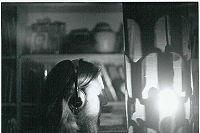
The question remained - how to relax the muscles. It so happened that the majority of modern people live in constant stress and muscle clamps are the norm. For these purposes, I tried cheap Chinese devices designed not for weight loss, not for “lazy muscle swing”. That forced the muscles to compress and unclench with the help of current pulses. The disadvantage of these devices was the need to use a conductive gel.
Such a detail from my point of view was not very convenient.
In the end I thought - the muscles relax with a massage. Now, if we could find a masseuse who would massage the muscles with a frequency of 12 hertz, this would simultaneously allow them to relax, as well as serve as a source of synchronization for the brain. In the end, I decided to make a belt with a vibrating motor attached, which could be mounted on arms and legs.
Total got two channels of input information that we can manage. For greater efficiency, I decided to also use the modulated sound at a given frequency. In fact, a person is not able to hear the sound of 12 Hz. To solve this problem, I decided to use the carrier frequency or just a monotonous melody, the volume of which will vary with a frequency of 12 Hz.
So from the theoretical model, I moved to the practical. A device was developed which synchronously produced light, vibration and sound signals with a smoothly adjustable frequency.
Diagram of the device below:
Schematic circuit (can be downloaded from the link below):
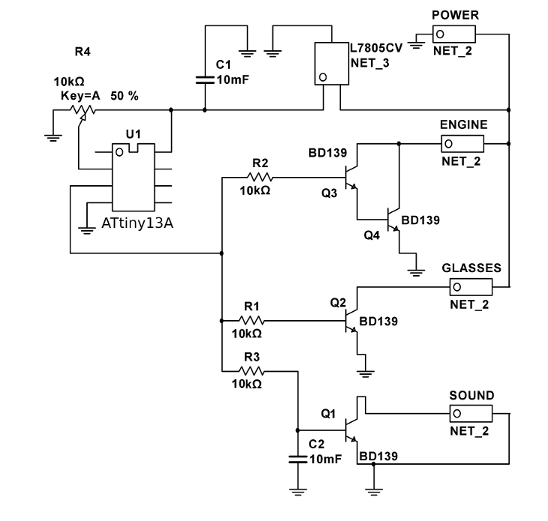
Printed circuit board (can be downloaded from the link below):
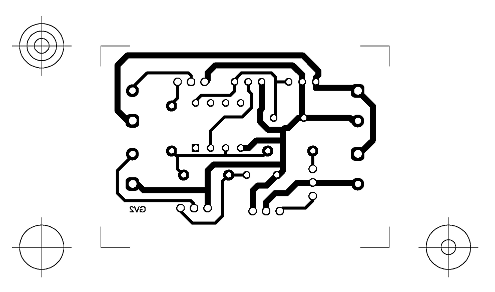
Layer Layer:
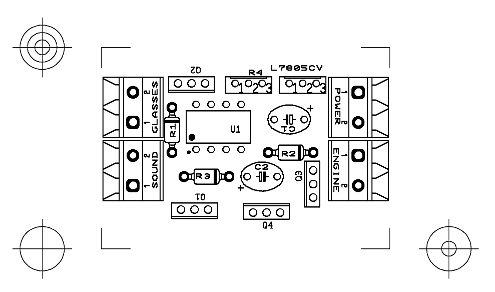
Microcontroller program (can be downloaded from the link below):
The device itself:


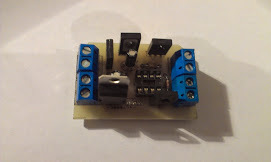
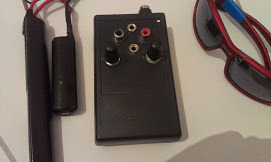
The vibro part was assembled on the basis of electric motors from a CD-drive and a drum from adhesive tape.

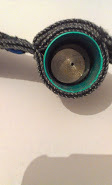
A study on friends showed that 7 of the 8 friends in existence were beginning to see different kinds of images, even realistic dream paintings.
In the case of the use of LEDs in glasses - the images as a rule for some reason turned out to be square.
The device itself was used for training direct entry into lucid dreaming. Those. to enter dreams directly from the waking state without losing awareness.
Link to materials here .
PS Audio connector works in the key mode which is turned on and off smoothly.
I would appreciate any suggestions for improvement.
The text used materials from the free encyclopedia .
Recently, a number of articles devoted to lucid dreams have appeared on Habré.
And I thought that my research in this area might be interesting for others.
It all began with attempts to scientifically describe and explain the phenomenon of lucid dreams or in other words OSs . For what I had to do a lot of experiments on myself and others. As a rule, these experiments were painless, although there were exceptions. In the end, I happened to meet with the guys who were engaged in this study more thoroughly. In particular, the children had an electroencephalograph (hereinafter referred to as EEG), with the help of which the EEG of the human brain was shot during lucid dreaming.
To determine the moment of dreaming, the dreamer was given a certain task, which he had to perform in the dream and which was easy to read by the EEG, in particular, consistently look left-right. This action was easily determined by the temporal electrodes.
')
In fact, it turned out that the EEG of the dreamer in a lucid dream almost completely coincides with the EEG of a waking person. The information was interesting but did not give any practical application.
Also, the EEG showed that calmer people, like people in a state of meditation, have distinct patterns of operation of certain parts of the brain, namely, signals with a frequency of ~ 8-12 hertz. It looks like this:

In parallel, I received information from all sorts of spiritual practitioners that in order to enter a state of trance / lucid dreaming, it is necessary to relax and stop the internal dialogue.
Then the thought began to creep in that the key for entering the meditative state is in synchronization of the work of some parts of the brain at a frequency of ~ 8-12 hertz. Experiments began in this area. Starting from electric shocks with a given frequency to other more sophisticated methods.
The solution was found by chance - stumbled upon an article in Wikipedia about the dream-machine invented in the past. The essence of the invention was that a cylinder with slots rotated around the light source. Thereby issuing a flicker frequency of about 12 hertz. The result was a simple way to perceive the game of colors and dream images.

The question remained - how to relax the muscles. It so happened that the majority of modern people live in constant stress and muscle clamps are the norm. For these purposes, I tried cheap Chinese devices designed not for weight loss, not for “lazy muscle swing”. That forced the muscles to compress and unclench with the help of current pulses. The disadvantage of these devices was the need to use a conductive gel.
Such a detail from my point of view was not very convenient.
In the end I thought - the muscles relax with a massage. Now, if we could find a masseuse who would massage the muscles with a frequency of 12 hertz, this would simultaneously allow them to relax, as well as serve as a source of synchronization for the brain. In the end, I decided to make a belt with a vibrating motor attached, which could be mounted on arms and legs.
Total got two channels of input information that we can manage. For greater efficiency, I decided to also use the modulated sound at a given frequency. In fact, a person is not able to hear the sound of 12 Hz. To solve this problem, I decided to use the carrier frequency or just a monotonous melody, the volume of which will vary with a frequency of 12 Hz.
So from the theoretical model, I moved to the practical. A device was developed which synchronously produced light, vibration and sound signals with a smoothly adjustable frequency.
Diagram of the device below:
Schematic circuit (can be downloaded from the link below):

Printed circuit board (can be downloaded from the link below):

Layer Layer:

Microcontroller program (can be downloaded from the link below):
#define F_CPU 9600000/16 // AVR clock frequency in Hz, used by util/delay.h #include <avr/io.h> #include <avr/interrupt.h> #include <avr/sleep.h> #include <util/delay.h> #include <avr/io.h> #define VD_ON PORTB |= 0b00010000 #define VD_OFF PORTB &= 0b11101111 volatile static int mscount = 50; ISR (ADC_vect) { mscount = ADCW / 6; if(mscount < 30) { mscount = 30; } ADCSRA = ADCSRA | 0x40; } void sleep(int count) { for(int i = 0; i < count; ++i) { _delay_ms(1); } } int main(void) { PORTB = 0b11111111; DDRB = 0b00010000; ADMUX = 3; ADCSRA = 0xCE; sei(); while(1) { VD_ON; sleep(mscount); VD_OFF; sleep(mscount); } } The device itself:




The vibro part was assembled on the basis of electric motors from a CD-drive and a drum from adhesive tape.


A study on friends showed that 7 of the 8 friends in existence were beginning to see different kinds of images, even realistic dream paintings.
In the case of the use of LEDs in glasses - the images as a rule for some reason turned out to be square.
The device itself was used for training direct entry into lucid dreaming. Those. to enter dreams directly from the waking state without losing awareness.
Link to materials here .
PS Audio connector works in the key mode which is turned on and off smoothly.
I would appreciate any suggestions for improvement.
The text used materials from the free encyclopedia .
Source: https://habr.com/ru/post/229529/
All Articles